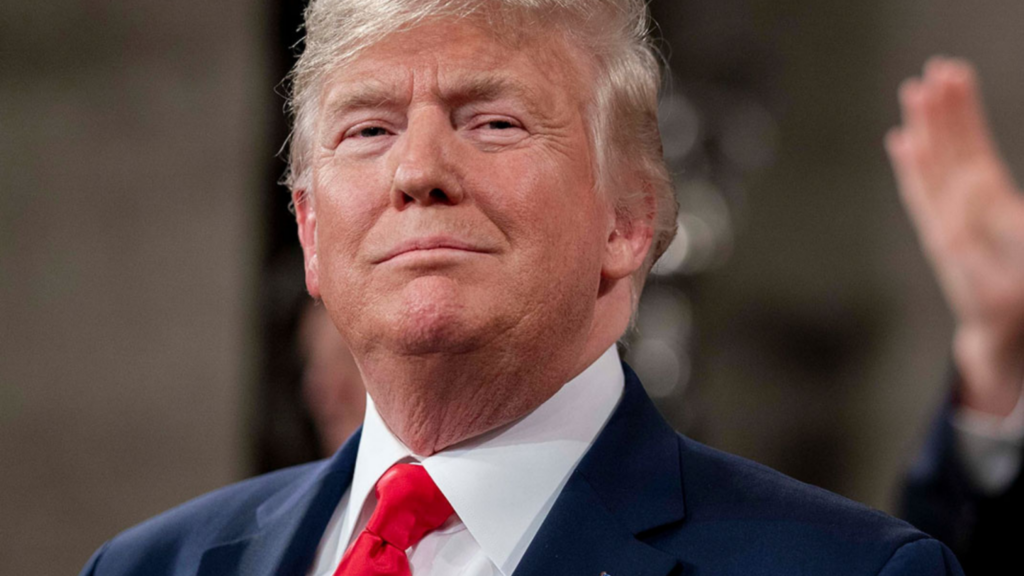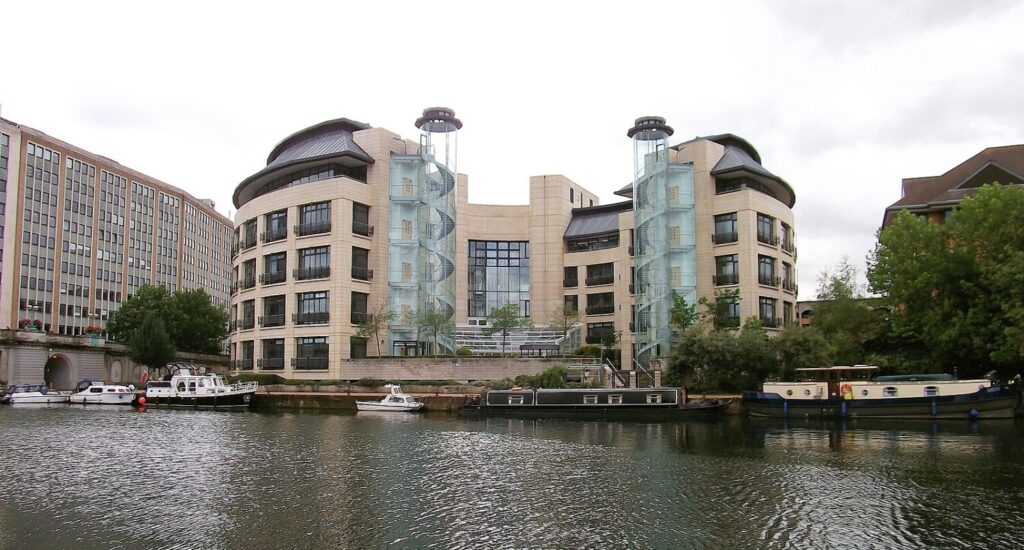The Impact of the US–Africa Leaders Summit on Political and Investment Risks in Africa
The 2022 US–Africa Leaders Summit marked a renewed effort to recalibrate relations between Washington and the continent.
The US-Africa Leaders Summit, held in Washington, D.C., from 13–15 December 2022, marked a significant diplomatic milestone, bringing together delegations from 49 African countries and the African Union to recalibrate US-Africa relations (US Department of State, 2022). Beyond symbolism, the Summit generated tangible outcomes: over the following year, US agencies facilitated 547 new deals, and the Biden-Harris Administration surpassed its original $55 billion three-year pledge, reportedly committing over $65 billion in Africa two years after the Summit (White House, 2023; White House, 2024a).
This article explores whether and how the Summit has reduced political and investment risk in Africa. Drawing on recent data, FDI trends, governance indices, infrastructure projects, and de-risking instruments, it shows that while the Summit has not lowered risk uniformly, it has contributed to measurable reductions in select markets and sectors through four key mechanisms: (1) policy signaling; (2) de-risked infrastructure (e.g., Lobito Corridor projects); (3) compliance and governance enhancements; and (4) deal facilitation via testable pipelines. These actions correspond with a sharp FDI rebound, albeit uneven governance gains, and enduring security concerns.
Baseline Trends in Risk and Investment
Political Risk & Governance
Political risk in Africa remains heterogeneous. According to the Ibrahim Index of African Governance (IIAG), average governance scores have stagnated at around 49.3 out of 100 from 2014 to 2023. While more than 40 countries improved in domains like economic opportunities and human development, over 30 countries saw declines in critical areas like security, rule of law, and inclusion (Mo Ibrahim Foundation, 2024a). This suggests that, although structural foundations can improve, insecurity continues to be a major risk driver.
Investment Flows & Project Finance
Before the Summit, African FDI inflows slipped 3% to $53 billion in 2023, driven by tightening global financial conditions and a 26% drop in international project finance (UNCTAD, 2024a; 2024b). However, in 2024 FDI surged 75% to $97 billion, restoring Africa’s global FDI share to 6%, with even baseline, non-megaproject inflows rising around 12% to approximately $62 billion (UNCTAD, 2025a; 2025b). This turnaround occurred as U.S. outreach intensified through the Summit follow-ups and deal facilitation efforts (White House, 2023; State Department, 2025).
Mechanism 1: Policy Signaling & Credible Commitments
High-level gatherings, if followed by concrete action, can reduce political risk by anchoring expectations. The Summit delivered such signals with substantial metrics: 547 deals worth $14.2 billion, performance tracking via fact sheets, and a report of surpassing the $55 billion pledge (White House, 2023; 2024a). These figures provide investors with measurable benchmarks for accountability and implementation timelines.
The policy literature emphasizes that reputational credibility matters as much as structural reform. Summit-connected reporting and high-profile visits, 20 at Cabinet level by December 2024, help to field perceptions of sustained US engagement (Carnegie Endowment for International Peace, 2022). Investors can interpret these signals as reducing the probability of abrupt withdrawal or policy flip-flops.
Mechanism 2: De-Risking Finance Through Infrastructure: The Lobito Corridor
Cross-border infrastructure can play a pivotal role in mitigating risk by reducing logistics bottlenecks. The Partnership for Global Infrastructure and Investment (PGI) designated the Lobito Trans-Africa Corridor, spanning approximately 1,289 km of railway between Angola’s Lobito port and Luau, plus mineral port facilities, as a flagship project (White House, 2024b; DFC, 2024a).
The US International Development Finance Corporation (DFC) contributed $553 million toward track refurbishment, aimed at improving copper and cobalt flows from the DRC and Zambia (DFC, 2024a). The corridor also benefits from political risk insurance and layered financing from public and private sources (White House, 2024b). This targeted infrastructure reduces cost risk, time delays, and regulatory uncertainty for investors operating in tied value chains.
Mechanism 3: Enhancing Governance and Compliance Standards
Investment risk often stems from weak regulatory and financial systems. Through the Summit and related initiatives, the US prioritized support for anti-money laundering/countering terrorist financing (AML/CFT) frameworks aligned with Financial Action Task Force (FATF) standards, key in maintaining correspondent banking relationships and lowering compliance-related investment costs (FATF, 2024). The Summit’s Partnership for Global Infrastructure and Investment (PGI)-linked infrastructure deals were conditioned on compliance and transparency in procurement, environmental safeguards, and governance (White House, 2024b; State Department, 2024).
While aggregate governance indices remain flat (Mo Ibrahim Foundation, 2024b), directionality and policy milestones can be as important to investor perception as overall scores. Governments pursuing upgrades in AML/CFT or sector-specific regulators can reduce perceived non-commercial risk, even when broader governance remains a work in progress.
Mechanism 4: Deal Facilitation & Expanding Bankable Pipelines
The Summit established frameworks for matchmaking and de-risked capital flows. In 2023, DFC committed more than $2 billion across 46 Africa-focused transactions (University of California, Santa Barbara (UCSB) Presidency, 2023). By 2024, its global portfolio rose above $12 billion, including substantial engagement in Africa (DFC, 2024b). Additionally, the U.S.-Africa business summit in June 2025 added another $2.5 billion in deals and commitments (State Department, 2025).
These figures show active pipeline mobilization, reducing investors’ origin risk by pairing deals with technical assistance, blended finance, and public coordination, which typically raises bankability in frontier markets.
Empirical Impact: Does Risk Actually Decline?
Three metrics suggest that Summit-linked actions are translating to reduced investment risk in targeted contexts:
- FDI Rebound: The sharp rebound from $53 billion in 2023 to $97 billion in 2024, and continued growth even excluding Egypt megadeals, signals renewed investor confidence (UNCTAD, 2025a; 2025b).
- Infrastructure Project Finance: The continuation of Lobito Corridor investments amidst a global downturn in project finance (–26% in 2023) suggests that de-risked channels make otherwise unbankable projects viable (UNCTAD, 2024b; White House, 2024b).
- Governance Momentum: While IIAG scores remain mixed, targeted improvements aligned with Summit-linked standards correlate with investor-targeted sectors (Mo Ibrahim Foundation, 2024a).
Yet these gains are not universal. Instability continues in regions facing coups, civil wars, or geopolitical shocks (e.g., Sudan, Sahel). Rising global interest rates and sovereign debt burdens also complicate project affordability and sustainability (UNCTAD, 2024a).
Pathways from Summit to Risk Pricing
A. Credible Signals & Transparency
Summit fact sheets, detailing 547 deals, financial pledges, and timeline, increase policy transparency and reduce uncertainty, enabling investors to price more accurately (White House, 2023; 2024a). Independent trackers confirming 27% of follow-through in investments, 19% in climate, etc., amplify transparency (Development Reimagined, 2025).
B. Risk Insurance & Financial Structuring
DFC’s instruments, loan, insurance, guarantees, “buy down” political and construction risk by substituting in U.S. sovereign backing (DFC, 2024a). For infrastructure like the Lobito Corridor, this means lower interest rates and longer tenors, critical in frontier-risk pricing.
C. Governance Spillovers
PGI’s compliance-linked deals (transparency, safeguards) help shape market expectations for governance in sectors such as energy, logistics, and digital infrastructure, helping shift risk perceptions even amid slow aggregate governance improvements (State Department, n.d.).
Limitations and Alternate Explanations
Attribution remains complex. Other investors (China, EU, Gulf, multilaterals) were active simultaneously. Commodity price fluctuations and African domestic reforms also impact FDI. Literature cautions that Summit follow-through depends heavily on institutional capacity (Urnov, 2023; Carnegie Endowment for International Peace, 2022). Governance remains bifurcated across countries, risk drops in promising corridors, remains elevated elsewhere.
The U.S.-Africa Leaders Summit has not eliminated political or investment risk, but it has implemented material, selective risk reduction. Through powerful policy signaling, de-risked infrastructure investments (e.g., Lobito Corridor), governance-linked financing, and structured deal-making platforms, risk premia have narrowed in sectors primed for investment. The 75% FDI recovery, sustained commitments, and active DFC engagement corroborate that diplomatic momentum can be converted into tangible investor confidence (UNCTAD, 2025a; White House, 2023; State Department, 2025).
The Summit’s lasting legacy depends on maintaining infrastructure delivery, institutionalizing governance standards, expanding blended finance further, and anchoring investments to regional integration (e.g., AfCFTA). If executed properly, these steps could help structurally lower the cost of capital in African markets, delivering sustainable growth and resilience.
The impact of the upcoming September 2025 U.S.-Africa Leaders Summit in New York remains to be seen, especially in terms of how it will shape continuity and change in reducing political and investment risks across Africa. Previous summits, including the 2014 and 2022 editions, demonstrated both the potential and the limits of such high-level engagements: while they generated significant pledges, frameworks for infrastructure and trade, and renewed diplomatic momentum, follow-through has often depended on institutional capacity and shifting geopolitical dynamics. The 2025 summit therefore carries heightened expectations, particularly as Africa navigates mounting challenges such as climate change, debt distress, and governance reform, while external actors like China, the EU, and Gulf states continue to expand their footprint on the continent. Whether this summit translates into sustained improvements in investor confidence, policy coordination, and political stability will depend not only on U.S. commitments but also on African governments’ ability to leverage agreements into tangible reforms.
Bibliography
- Carnegie Endowment for International Peace (2022) ‘The U.S.–Africa Leaders Summit Marks a Seismic Shift in Relations with the Continent’, 22 December. Available at: https://carnegieendowment.org/posts/2022/12/the-us-africa-leaders-summit-marks-a-seismic-shift-in-relations-with-the-continent?lang=en (Accessed: 25 August 2025).
- Development Reimagined (2025) Tracker: Progress on the 2022 U.S.–Africa Leaders’ Summit Commitments. Available at: https://developmentreimagined.com/tracker-progress-on-the-2022-us-africa-leaders-summit-commitments/ (Accessed: 26 August 2025).
- DFC (U.S. International Development Finance Corporation) (2024a) Lobito Atlantic Railway SA (Angola) Project Description, Washington, DC: U.S. International Development Finance Corporation. Available at: https://www.dfc.gov/media/press-releases/dfc-announces-investments-supporting-development-along-lobito-corridor (Accessed: 23 August 2025)
- DFC (U.S. International Development Finance Corporation) (2024b) Annual Report 2024. Washington, DC: U.S. International Development Finance Corporation. Available at: https://www.dfc.gov/sites/default/files/Annual_Report_DFC_2024.pdf (Accessed: 23 August 2025).
- DFC (U.S. International Development Finance Corporation) (2024c) DFC Commits More Than $12 Billion in Fiscal Year 2024 to Address Foreign Policy and Development Priorities, 2 October. Available at: https://www.dfc.gov/media/press-releases/dfc-expands-global-impact-record-breaking-investments-fiscal-year-2024 (Accessed: 23 August 2025).
- Financial Action Task Force (FATF) (2024) ‘Jurisdictions under Increased Monitoring – June 2024’. Available at: https://www.fatf-gafi.org/en/publications/High-risk-and-other-monitored-jurisdictions/increased-monitoring-june-2024.html (Accessed: 20 August 2025).
- Mo Ibrahim Foundation (2024a) 2024 Ibrahim Index of African Governance: Index Report. London: Mo Ibrahim Foundation. Available at: https://mo.ibrahim.foundation/news/2024/launch-2024-ibrahim-index-african-governance-iiag-report (Accessed: 21 August 2025).
- Mo Ibrahim Foundation (2024b) 2024 Ibrahim Index of African Governance: Index Report. London: Mo Ibrahim Foundation. Available at: https://assets.iiag.online/2024/2024-Index-Report.pdf (Accessed: 21 August 2025)
- State Department (U.S.) (2025) ‘Record-Breaking U.S.–Africa Business Summit Yields $2.5 Billion in Deals and Commitments’, 30 June. Available at: https://www.state.gov/releases/office-of-the-spokesperson/2025/06/record-breaking-u-s-africa-business-summit-yields-2-5-billion-in-deals-and-commitments/ (Accessed: 25 August 2025).
- State Department (U.S.) (2024) ‘Digital Press Briefing: Lobito Corridor Expansion and U.S. Infrastructure on the African Continent’, 28 August. Available at: https://2021-2025.state.gov/digital-press-briefing-lobito-corridor-expansion-and-u-s-infrastructure-on-the-african-continent-2/ (Accessed: 25 August 2025).
- U.S. Department of State (n.d.) About the Office of the U.S. Special Coordinator for the Partnership for Global Infrastructure and Investment. Available at: https://www.state.gov/about-us-office-of-the-u-s-special-coordinator-for-the-partnership-for-global-infrastructure-and-investment/ (Accessed: 25 August 2025).
- University of California, Santa Barbara (UCSB) Presidency (2023) Fact Sheet: Accelerating the U.S.–Africa Partnership After the 2022 U.S.–Africa Leaders Summit, December 13. Available at: https://www.presidency.ucsb.edu/documents/fact-sheet-accelerating-the-us-africa-partnership-after-the-2022-us-africa-leaders-summit (Accessed: 24 August 2025)
- UNCTAD (2024a) World Investment Report 2024: Investment Facilitation and Growth. Geneva: United Nations Conference on Trade and Development. Available at: https://unctad.org/publication/world-investment-report-2024 (Accessed: 26 August 2025).
- UNCTAD (2024b) Regional Trends: Africa (WIR 2024). Geneva: United Nations Conference on Trade and Development. Available at: https://unctad.org/system/files/non-official-document/wir2024-regional_trends_africa_en.pdf (Accessed: 26 August 2025).
- UNCTAD (2025a) World Investment Report 2025. Geneva: United Nations Conference on Trade and Development. Available at: https://unctad.org/system/files/official-document/wir2025_en.pdf (Accessed: 27 August 2025).
- UNCTAD (2025b) ‘Africa: Foreign Investment Hit Record High in 2024’, UNCTAD Press Material, 19 June. Available at: https://unctad.org/system/files/press-material/pr25007_wir25_africa_final_en.pdf (Accessed: 27 August 2025).
- U.S. Department of State (2022) U.S.–Africa Leaders Summit (2022). Washington, DC: U.S. Department of State. Available at: https://2021-2025.state.gov/africasummit/ (Accessed: 218 August 2025).
- White House (2023) ‘Fact Sheet: Accelerating the U.S.–Africa Partnership After the 2022 U.S.–Africa Leaders Summit’, 13 December. Washington, DC: The White House. Available at: https://bidenwhitehouse.archives.gov/briefing-room/statements-releases/2023/12/13/fact-sheet-accelerating-the-u-s-africa-partnership-after-the-2022-u-s-africa-leaders-summit/ (Accessed: 17 August 2025).
- White House (2024a) ‘Fact Sheet: Celebrating U.S.–Africa Partnership Two Years After the 2022 Summit’, 14 December. Washington, DC: The White House. Available at: https://bidenwhitehouse.archives.gov/briefing-room/statements-releases/2024/12/14/fact-sheet-celebrating-u-s-africa-partnership-two-years-after-the-2022-u-s-africa-leaders-summit/ (Accessed: 17 August 2025).
- White House (2024b) ‘Partnership for Global Infrastructure and Investment in the Lobito Trans-Africa Corridor’, 3 December. Washington, DC: The White House. Available at: https://agoa.info/images/documents/16535/fact-sheet-partnership-for-global-infrastructure-and-investment-in-the-lobito-trans-africa-corridor-.pdf (Accessed: 18 August 2025).
- Urnov, A.Y. (2023) ‘Africa Leaders Summit (13–15 December 2022)’, Asia and Africa Today, 3(9). Available at: DOI: https://doi.org/10.31857/S032150750024405-7 (Accessed: 23 August 2025).



